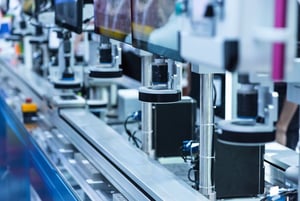Concurrent Technologies plc (LON:CNC) is the topic of conversation when Cenkos Securities Director of Research Ian McInally caught up with DirectorsTalk Managing Director Darren Turgel for an exclusive interview.
Q1: What were the key takeaways in Concurrent Technologies’ H1 ’22 update?
A1: There are a couple of major takeaways, the first one being the strength of the underlying business and the growing order intake. This is very positive and shows clear success with the execution of strategy by the new management team (increasing the range and frequency and timing of product launches, etc). The second major item is obviously the supply chain interruption that has inevitably slowed customer order fulfilment. Whilst this is very frustrating, it is really just a matter of timing. No orders have gone away (or are likely too, as customers understand the issue and are experiencing it themselves elsewhere) and there is a substantial, growing order backlog to release as soon as the component supply improves.
Q2: What are some of the investments the company has made in 2022 that will accelerate delivery of its strategy?
A2: The main investments have been in people and improving the structures within the business. The manufacturing capability is already well invested and there is plenty capacity to improve sales substantially from current levels. Investment has been made in the new facility in Theale, which has created a state of the art facility for engineering design (the new design hub) and improving the commercial presentation of the business. The agreement with US manufacturing partner, Nextek, is a big step forward, also increasing manufacturing capacity substantially but also opening up significant growth potential in the US market (where local manufacturing content is increasingly important).
Q3: What progress has the company made in the USA?
A3: In the USA, as mentioned at the end of the last point, the addition of a US outsourced manufacturing partner, Nextek, is a significant strategic step forward. Approving and appointing such a partner is a non-trivial process. Concurrent has strict controls within its own supply chain and the necessary proving, quality control, provenance and trust is not straight forward to replicate. Often, this supply chain control is contracted with customers. This is another reason why customers won’t just move orders about because of short-term delays in the supply chain. The vast majority of business done in the US by Concurrent technologies is within the defence sector and the “made in the USA” stamp is a big factor in procurement decisions. We would expect this to start driving further order growth from 2023 but certainly into 2024.
Q4: Have your forecasts changed in any way for Concurrent Technologies?
A4: Our forecasts have changed for FY22E and FY23E, purely on the back of the supply chain problems that have delayed manufacturing and order fulfilment. FY23E is more cautious than our previous forecasts just on the back of the FY22E delays, though could easily improve dramatically depending on when components become available. In our recent research note we set out an illustrative projection scenario based on the core assumption of there being no supply chain problems. The revenue projections in this scenario analysis are underpinned by the current level of order intake and growing order backlog along with management’s stated plans for the frequency of product launches in coming periods (as well as the move into the provision of full systems). There is no getting away from the short term impact of supply chain problems, though management is doing all it can to mitigate these. However, once component supply normalises, there is a substantial backlog to release and the business is going to be very busy! Manufacturing capacity is increasing to a double shift per day operation this month (October) in preparation for a dramatic increase in activity as soon as supply chains normalise.





































